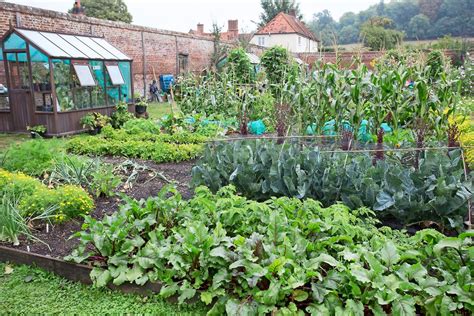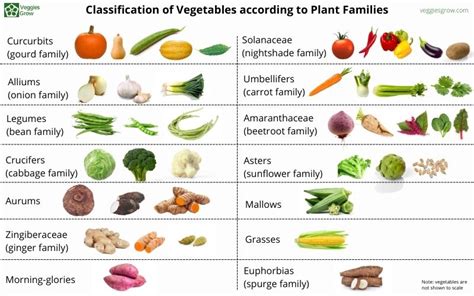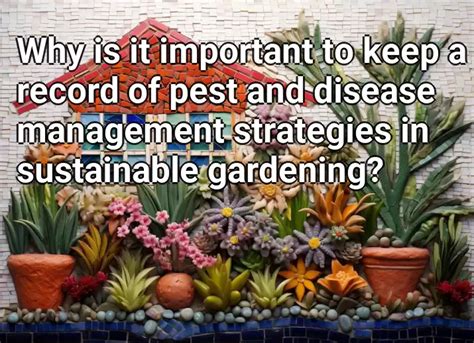Have you ever yearned for a lush oasis right in your own backyard? A place where you can cultivate a vibrant, thriving ecosystem of greenery and nourishing vegetables? If you've ever harbored a desire to transform your open space into a bountiful haven, then this article is a must-read.
Unlocking the secrets to a flourishing vegetable garden is a mission that requires careful planning and a touch of finesse. It's not just about planting seeds and hoping for the best – it's about understanding the delicate balance between nature and nurture, and employing strategic techniques to maximize your garden's potential.
Embark on this journey armed with the valuable wisdom and essential knowledge needed to elevate your gardening game. From soil preparation to pest control, irrigation to plant selection, we will guide you through each step of the process, ensuring that you are equipped with the tools to achieve gardening greatness.
Choosing the Ideal Site for Your Thriving Home Vegetable Patch

When it comes to cultivating a flourishing and productive vegetable garden, one of the key factors to consider is the selection of an optimal location. The right site can make all the difference in the success of your garden, ensuring that your plants thrive and yield a bountiful harvest. In this section, we will explore various crucial aspects to keep in mind when choosing the perfect spot for your vegetable patch, offering helpful tips and insights along the way.
1. Sunlight Exposure
- Seek a location that receives ample sunlight throughout the day, as most vegetable plants require at least six hours of direct sunlight to flourish.
- Ensure that the chosen site is not obstructed by tall trees or buildings, as these can cast shadows and impede the amount of sunlight received by your plants.
- Consider the orientation of the garden plot to maximize exposure to the sun, with a south or southeast-facing site being ideal for most vegetables.
2. Soil Quality
- Choose a spot with fertile soil that is well-draining, loose, and loamy, as this will provide a favorable environment for the growth of your vegetables.
- Conduct a soil test to determine its pH level and nutrient content; most vegetable plants prefer a slightly acidic to neutral pH range (around 6.0 to 7.0).
- Consider amending the soil with organic matter, such as compost or well-rotted manure, to improve its fertility and structure.
3. Accessibility and Convenience
- Select a location that is easily accessible, allowing you to tend to your garden tasks with convenience.
- Ensure that the site is in close proximity to a water source, as regular irrigation is essential for the growth and vitality of your vegetables.
- Consider factors such as proximity to storage areas, compost bins, and necessary gardening tools to make your gardening experience more efficient and enjoyable.
4. Protection and Shelter
- Choose a spot that provides natural or man-made protection from harsh winds, as strong gusts can damage delicate vegetable plants.
- Consider the potential for frost or extreme temperatures and select a location that offers some degree of shelter or the ability to install protective measures, such as cold frames or row covers.
- Observe the surroundings and be mindful of nearby pests, such as rabbits or deer; consider installing fencing or other deterrents to safeguard your garden.
In conclusion, selecting the right location for your vegetable garden plays a vital role in its overall success. By considering factors such as sunlight exposure, soil quality, accessibility, and protection, you can create an optimal environment for your plants to thrive, ensuring a bountiful and green harvest for years to come.
Must-Have Tools and Supplies for a Flourishing Gardening Experience
When embarking on the journey of cultivating a thriving garden, it is essential to equip yourself with the necessary tools and supplies to ensure success. Having the right gear at your disposal can make the difference between a mediocre garden and an extraordinary one. In this section, we will explore an array of essential items that will assist you in achieving a bountiful and verdant garden without any difficulties.
To kickstart your gardening experience, a sturdy pair of gloves should be at the top of your list. These gloves not only protect your hands from dirt and potential scratches but also provide a better grip when handling soil, seeds, and plants. Additionally, investing in a quality pair of garden pruners is vital for maintaining the health and aesthetics of your plants. Trim overgrown branches or remove diseased sections with ease, ensuring a healthy environment for your vegetables to flourish.
- A durable garden trowel is a versatile tool that will aid in digging and planting. Look for a trowel with a comfortable grip and a sharp edge for effortless soil manipulation.
- A garden fork is ideal for breaking up compacted soil and improving its aeration. This tool will ensure optimal root growth and better nutrient absorption for your plants.
- Don't forget about a reliable watering can or hose for proper hydration of your garden. Consistent and adequate watering is vital in supporting the growth and development of your vegetables.
- Investing in organic compost or fertilizer is crucial for enhancing soil fertility and providing essential nutrients to your plants. This will significantly contribute to the overall health and productivity of your garden.
- Consider utilizing mulch as it helps retain moisture, suppresses weed growth, and regulates soil temperature. Organic materials such as straw or wood chips can be excellent choices for effective mulching.
- When it comes to protecting your crops from pests or adverse weather conditions, having a quality insect netting or garden fabric on hand can make a significant difference. These materials act as protective barriers, preventing unwanted visitors and creating a microclimate suitable for your plants.
By ensuring you have these essential tools and supplies, you will be well-prepared to create a flourishing garden that yields an abundance of healthy and vibrant vegetables. Remember, the right equipment combined with your dedication and passion for gardening will make your dream of a thriving green vegetable garden a reality!
Selecting the Ideal Vegetables for Your Specific Region

When it comes to creating a flourishing and vibrant vegetable garden, one of the most important factors to consider is selecting the right vegetables for your specific region. Each area has its own unique climate, soil conditions, and growing season, which can greatly impact the success of your garden.
One of the first steps in choosing the best vegetables for your region is understanding the climate. Different vegetables have different temperature and moisture requirements, and selecting varieties that are well-suited to your climate will greatly increase your chances of success. If you live in a hot and arid climate, for example, you may want to consider heat-tolerant vegetables such as tomatoes, peppers, and okra. On the other hand, if you reside in a cooler and wetter climate, vegetables like lettuce, cabbage, and kale may be more suitable.
Another important consideration when choosing vegetables is the soil conditions in your region. Some vegetables thrive in well-draining sandy soils, while others prefer rich, loamy soils. Testing your soil and amending it with organic matter can help create the optimal conditions for your chosen vegetables. Additionally, if you have limited space or are gardening in containers, selecting vegetables that can be grown vertically, such as cucumbers, beans, and peas, can maximize your yield.
Furthermore, it is crucial to consider the length of your growing season. Some vegetables require a shorter growing season and can be planted earlier in the spring, while others need a longer growing period and should be planted later. Understanding the average frost dates and the maturity dates of different vegetables will enable you to plan your planting schedule effectively and ensure that your vegetables have ample time to grow and mature before the first frost arrives.
- Researching and selecting vegetables that are well-suited to your specific region is essential for a successful vegetable garden.
- Consider the climate of your region and choose vegetables that can thrive in the temperature and moisture conditions.
- Take into account the soil conditions and amend them accordingly to create an optimal growing environment.
- Maximize your space by selecting vegetables that can be grown vertically.
- Plan your planting schedule and ensure that your vegetables have enough time to grow and mature before the first frost.
By carefully selecting the best vegetables for your region, you can set the foundation for a thriving and productive vegetable garden. Understanding the specific requirements of each vegetable and tailoring your choices to match your region's climate, soil conditions, and growing season will greatly increase your chances of success.
Nurturing Healthy Soil for Optimal Plant Growth
Cultivating robust and vibrant plants in your vegetable garden requires more than just luck or wishful thinking. It all begins with nourishing and nurturing the soil that serves as the foundation for your plants' growth. By understanding the essential elements and practices for maintaining healthy soil, you can ensure optimal conditions for your plants to thrive and produce a bountiful harvest.
| 1. Soil Composition | The composition of your soil plays a vital role in determining its nutrient content, drainage capabilities, and overall fertility. It is important to assess the pH level, texture, and structure of your soil to make appropriate amendments and improve its quality. |
|---|---|
| 2. Organic Matter | Incorporating organic matter into your soil not only enhances its fertility but also improves its ability to retain moisture. Compost, aged manure, and leaf mold are excellent sources of organic matter that help enrich the soil with essential nutrients and increase microbial activity. |
| 3. Nutrient Balance | Providing your plants with a balanced supply of essential nutrients is crucial for their growth and development. Conduct regular soil testing to determine any nutrient deficiencies or excesses, and adjust your fertilization practices accordingly. |
| 4. Soil Aeration | Aerating the soil promotes healthy root growth by improving oxygen circulation and drainage. Use garden forks or aerating tools to loosen compacted soil, allowing roots to penetrate deeper and access nutrients more effectively. |
| 5. Mulching | Applying a layer of organic mulch around your plants helps regulate soil temperature, conserve moisture, and suppress weed growth. Mulch also gradually breaks down, enriching the soil with nutrients as it decomposes. |
| 6. Crop Rotation | Implementing a crop rotation plan can help prevent the depletion of specific nutrients and reduce the risk of plant diseases and pests. Rotate your vegetable crops annually to maintain soil health and optimize overall garden productivity. |
By giving utmost attention to nurturing healthy soil, you provide your plants with a solid foundation for growth, ensuring they receive the necessary nutrients, moisture, and support for optimal development and a fruitful harvest.
Pest and Disease Control Strategies for a Thriving Garden

Creating a resilient garden involves more than just cultivating lush vegetation; it also requires implementing effective pest and disease control strategies. By adopting these strategies, you can protect your plants from potential threats and ensure the long-term health and productivity of your garden.
1. Vigilance: Regular monitoring of your garden is crucial for early detection of any signs of pests or diseases. Keep an eye out for wilting leaves, unusual discoloration, or the presence of pests such as aphids or slugs. Early intervention can prevent small issues from escalating into major problems.
2. Integrated Pest Management: Embrace a holistic approach to pest control by incorporating a variety of techniques. This includes attracting beneficial insects like ladybugs and lacewings, practicing crop rotation, and using physical barriers or traps. By diversifying your methods, you can create a balanced and resilient garden ecosystem.
3. Natural Remedies: Utilize organic and natural pest control methods whenever possible. This may involve making homemade insecticidal sprays using ingredients such as neem oil, garlic, or chilis. These alternatives are not only effective but also environmentally friendly, minimizing harm to beneficial insects and soil health.
4. Proper Watering and Fertilization: Maintaining proper watering and fertilization practices promotes healthy plants that are more resistant to pests and diseases. Overwatering can create an environment conducive to fungal diseases, while excessive fertilization can make plants more susceptible to pest attacks. Balance is key.
5. Crop Diversity: Planting a variety of crops helps prevent the buildup of pests and diseases specific to particular plants. By intermixing different vegetables or incorporating companion plants, you can disrupt pest life cycles and create an unfavorable environment for destructive insects.
6. Timely and Proper Pruning: Regularly pruning your plants not only promotes healthy growth but also removes weakened or diseased parts. This prevents the spread of diseases and reduces hiding places for pests. Remember to sanitize your pruning tools between plants to prevent the transmission of pathogens.
7. Knowledge and Education: Stay informed about common pests and diseases that affect your region and specific crops. Understanding their life cycles, preferred habitats, and early warning signs will enable you to implement targeted preventive measures and address problems promptly.
By incorporating these pest and disease control strategies into your gardening routine, you can create a resilient and thriving vegetable garden. Your plants will be more resistant to potential threats, allowing you to enjoy the bountiful harvest you've always dreamed of.
FAQ
What are some tips for starting a green vegetable garden?
To start a green vegetable garden, it is important to choose a suitable location with plenty of sunlight, prepare the soil by adding organic matter and nutrients, and select the right vegetables that are suitable for your climate. Additionally, regular watering, proper spacing between plants, and regular weeding and pest control are essential for a successful green vegetable garden.
What are some common mistakes to avoid when starting a green vegetable garden?
Some common mistakes to avoid when starting a green vegetable garden include overcrowding plants, not providing enough water or overwatering, neglecting to fertilize the soil, and using low-quality seeds or seedlings. It is also important to avoid planting vegetables in the wrong season and failing to control pests and diseases.
How can I maintain a healthy green vegetable garden throughout the year?
To maintain a healthy green vegetable garden throughout the year, it is necessary to regularly fertilize the soil, water the plants adequately, and provide proper pest and disease control. Additionally, practicing crop rotation, using mulch to retain moisture and control weeds, and monitoring the garden for any signs of nutrient deficiencies or problems are important for the long-term success of the garden.



